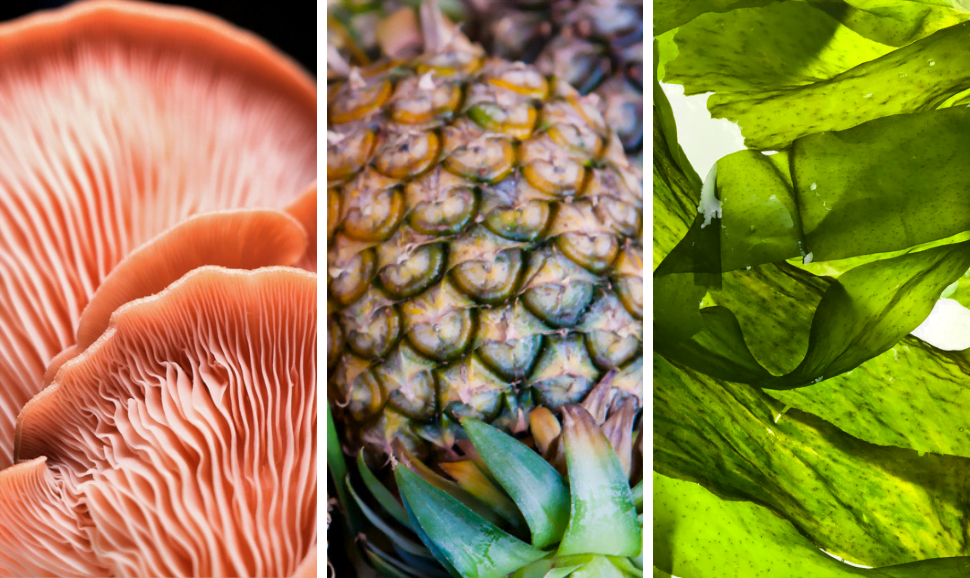From left to right: close up images of mushrooms, pineapple and seaweed, sources of bio-based products, which will represent a $7.7 trillion opportunity by 2030. Creating human-made materials from living or biological sources is by no means a new development, yet newly invented bio-based materials are garnering significant hype as of late. From electronic displays made from fish scales to sanitary products made from banana fibers, these inspiring innovations can capture human imagination and evoke an aspirational future free of toxins and litter, amongst other environmental improvements. But these materials do more than strike awe and inspiration. According to WBCSD’s recent report on the circular bioeconomy, bio-based products will represent a $7.7 trillion opportunity by 2030. To better understand these headline-grabbing materials, I followed up with three emerging bio-based products from a Circularity 20 panel exploring bio-utilization and the opportunities bio-based materials afford. Here’s what I uncovered. Turning mycelium into packaging that’s ‘compatible with the planet’ Founded in 2007, New York based Ecovative Design leverages the naturally binding properties of mycelium — mushroom’s root structure — in several sustainable materials. The company’s first technology, MycoComposite, precipitated the subsidiary Mushroom Packaging , which I discussed with Ecovative’s business development lead, […]
Click here to view original web page at Lessons from 3 emerging bio-based material technologies










